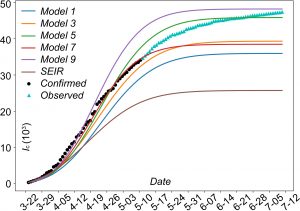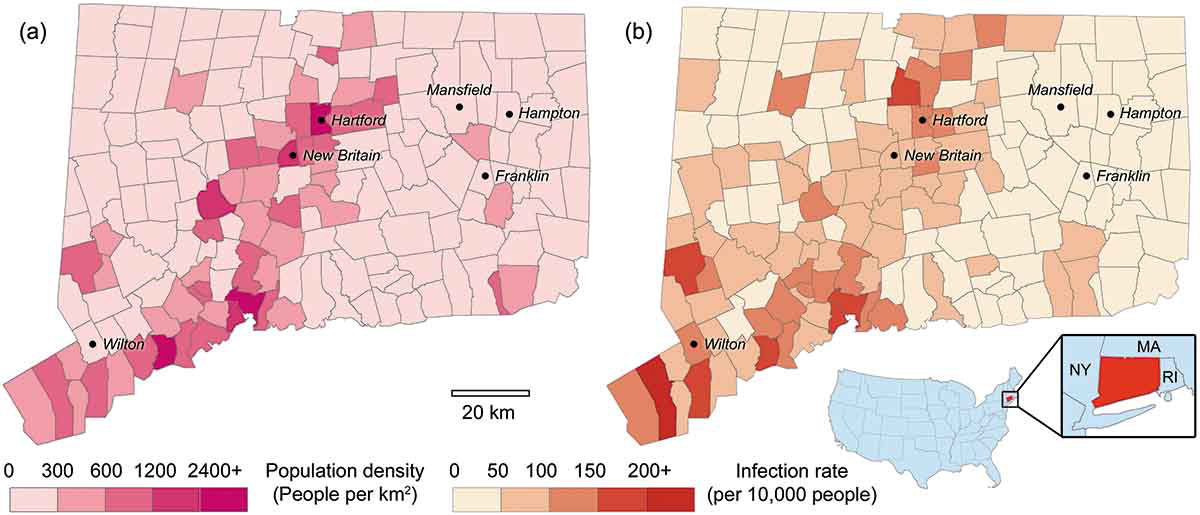UConn professor of geography Peter Chen has published a study in the January 2021 issue of the International Journal of Geographical Information Science outlining a comprehensive predictive model for COVID-19 in every Connecticut town based on travel behaviors.
This model, named the MSEIR model, is a major contribution to the field, as it is the first COVID-19 model to focus on the town, rather than the state or national level.
Chen’s collaborators included Aiyin Zhang from Clark University, Hui Wang from the University of Idaho, and Xiaolin Zhu from the Hong Kong Polytechnic University. Adam Gallaher, a Ph.D. student in geography at UConn who also developed the Connecticut COVID-19 monitoring dashboard, is another member of the team.
“We came together to evaluate the problem,” Chen says.
Using data from the Connecticut Department of Public Health, the team modified the traditional SEIR model, a classical model for epidemic simulations, by adding in social distancing metrics and residents’ travel activities. Essentially, they surveyed Connecticut residents to find out if they were traveling and if so, how far.
“SEIR is an isolated, secluded model that doesn’t consider travel behavior,” Chen says. “We used real-world data to understand where people are going in the new model.”
This information on social distancing behaviors is critical for building accurate models of the pandemic in Connecticut. Especially with state-to-state travel bans and restrictions, most infections are not coming from outside the state – the virus is being transmitted from town-to-town because of intrastate travel.
“After the early outbreak, all travel was happening on a local level,” Chen says. “Most infections occur on a town level. Those are where infections were happening.”
Chen’s group created nine models. Each model considers different levels of social distancing containment and compliance. Model 1 presents the impact of the most stringent restrictions and Model 9, the least. According to the models, looser social distancing restrictions and compliance will put towns at a greater risk for increased infection rates.
The models predict cases in each Connecticut town. Some towns, such as Ledyard and Lisbon, are predicted to see a significantly greater percentage increase of cases than others based on the scenarios the models presume. This information is important for local and state health officials determining how to leverage resources and form social distancing policies.
While larger-scale studies are easier because they have much larger aggregate data sets to work with, this kind of mesoscale study is much more informative to local health officials.

“I think this will be very important not only to people at the Connecticut Department of Health managing resources and leveraging them to serve high-risk towns, but also on the local government level,” Chen says. “If they realize they have a high risk, they can be more cautious.”
Even though the pandemic can take unexpected turns, the model still provides valuable insights based on current trends. The team is still collecting data weekly to incorporate it into the ever-evolving pandemic situations.
This project was funded by grants from the National Science Foundation, the Hong Kong Polytechnic University, and UConn’s Institute for Collaboration on Health, Intervention, and Policy (InCHIP).
Peter (Xiang) Chen holds a Ph.D. in geography from The Ohio State University. He is a researcher with the UConn Institute for Collaboration on Health, Intervention and Policy (InCHIP). His research interests include GIS and big data analytics, food access, and community health.



